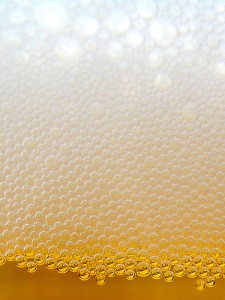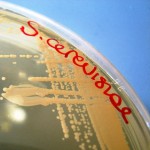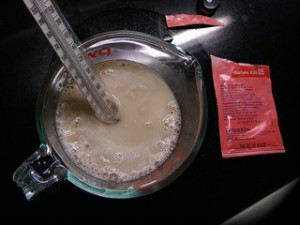 An important decision faces Oregon’s lawmakers this week. It concerns a $2.4 billion industry, an organism that’s important in genetics and other research, and a ritual that boosts the happiness of the multitudes, starting around 5 o’clock in the afternoon.
An important decision faces Oregon’s lawmakers this week. It concerns a $2.4 billion industry, an organism that’s important in genetics and other research, and a ritual that boosts the happiness of the multitudes, starting around 5 o’clock in the afternoon.
I know, I know. I could have just said that Oregon is considering making brewer’s yeast its state microbe—a designation that, if approved, would make it the first state with its very own microbe. But I don’t usually give microbes enough respect, even though they’re as essential as the air I breathe (in fact, cyanobacteria shaped our oxygen-rich atmosphere).
Maybe it’s because I’m lawyer-spawn, but I love the language of the resolution that went before the Oregon House of Representatives last week, which goes a long way in dignifying the microbe in question.
“Whereas Saccharomyces cerevisiae, a microorganism classified in the kingdom Fungi, has a long history of assisting in human gastronomic, cultural and scientific endeavors; and
Whereas Saccharomyces cerevisiae is commonly known as brewer’s yeast or baker’s yeast; and
Whereas dating back to ancient times, Saccharomyces cerevisiae has been used to leaven bread, converting fermentable sugars present in the dough into carbon dioxide and ethanol…”
 It turns out Oregon isn’t the first state that’s thought of this. In 2010, Wisconsin considered the cheese-making Lactococcus lactis as its state microbe—to accompany a list of state things from animal (badger) to fossil (trilobite) to the slightly-depressing state waltz (“Summer ended, we intended that our lives then would both be blended, but somehow our planning got lost.”).
It turns out Oregon isn’t the first state that’s thought of this. In 2010, Wisconsin considered the cheese-making Lactococcus lactis as its state microbe—to accompany a list of state things from animal (badger) to fossil (trilobite) to the slightly-depressing state waltz (“Summer ended, we intended that our lives then would both be blended, but somehow our planning got lost.”).
Unfortunately, the Wisconsin state senate did not vote on the state microbe—and on NPR, listeners nominated potential microbes for other states to consider. Elio Schaechter, a microbiologist who blogs at Small Things Considered, suggested radiation-resistant Deinococcus for Nevada, the oil-eating Syntrophus for Texas, and Streptomyces for New Jersey, home of many antibiotics discoveries.
Oregon may have a good precedent for making this microbe its own: in 2011, the legislature saluted Jory, a red soil that provides terroir for iconic state products from pinot noir grapes to Christmas trees, as its official state soil. Hawaii, too, is now considering its own microbe. (Nesiotobacter exalbescens even has its own Facebook page.)
Perhaps this is just the start of a new trend recognizing how important microbes really are. How about microbes as mascots? What’s more scary, Coach Taylor–panthers and lions or Yersinia pestis? Hawkers at baseball stadiums could carry pennants, bobbleheads, and charming giant stuffed Bacillis anthracis.
 Even if microbes are a long way from inspiring cheering crowds, people are trying to create more recognition for these nearly-unseen, essential agents in our global ecosystem. A recent perspective in PNAS highlighted both bacteria’s diversity and its importance.
Even if microbes are a long way from inspiring cheering crowds, people are trying to create more recognition for these nearly-unseen, essential agents in our global ecosystem. A recent perspective in PNAS highlighted both bacteria’s diversity and its importance.
And others are finding creative ways to celebrate the tiny stowaways that truly rule our world. One of these is Rogue Ale’s Brewmaster, John Maier. Rogue was a hunt for novel yeasts to generate new, locally-sourced beers. After a search of the brewery’s hopyard turned up nothing of interest, nine hair follicles were clipped from Maier’s decades-old beard and sent to the lab. Turns out a new-to-Rogue yeast had been hiding inside, one that was perfect for beer-brewing.
The resulting brew, New Crustacean, was scheduled to be released sometime this spring (and those who’ve tasted it seem to think it isn’t half-bad.) Maier, bearded since 1978, has no plans to cut his microbe haven.
The Oregon House of Representatives doesn’t think old Saccharomyces cerevisiae is half-bad either. Last week they passed the resolution 58-0. It now moves to the Senate.
**
Images from Flickr users
Top: bitzi Middle: Rising Damp Bottom: carobe